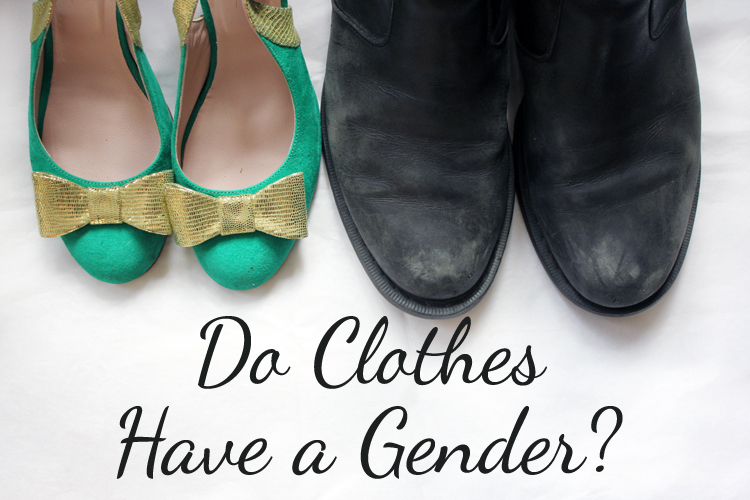The other day I had an email about a unisex, gender-fluid clothing line.
I headed off to take a look and was disappointed to discover just shirts and trousers. £200 shirts and trousers at that. To me they seemed less gender fluid and more, well, shirts and trousers really. They also came with no sizing or measurement guidelines at all, other than S/M and M/L sizes. How do I know which of those I am? Will S/M not go over my knees? Will M/L fall down when I walk? What is a gender fluid clothing line anyway, and do clothes even have a gender?
I’ve been thinking about gender in clothing for some time, I mean, not all the time. Just off and on when stories come up. The rest of the time I’m mostly thinking about what I’m next going to eat or what to watch on Netflix. When I first saw a story about a department store removing the mens and womens departments, my first thought was “but how will I find the dresses?” then I realised I would find the dresses exactly the same way I always did, in the “dresses” section.

The fact is that whether an item of clothing is filed arbitrarily under the mens or womens section is no guarantee it’s going to fit you just because you identify as that gender. I’m a woman, I’m pretty sturdy, I have broad shoulders and chunky arms. I know all too well the utter panic of getting stuck in a dress that won’t go over my shoulders. This happens particularly if they have a side zip. Once on I’ll find they might be too big on my waist, but when I try and take it off over my shoulders I either need some kind of technique to dislocate my shoulder joints, or the help of someone else to pull it over my head and arms. I’d probably find a dress designed to fit the broader shoulders more common in a “masculine” physique much more accommodating. On the opposite end of the scale my broad hips and small waist, which you would think would be extremely “feminine”, are just too much for most standard fit clothes as according to clothing surveys your average woman these days has a less curvy silhouette. These problems are by no means unique to me, I’ve yet to meet any person, no matter how they identify, that doesn’t have some kind of body shape issue that means they avoid or look out for certain shapes of clothing. Whether it’s short legs, narrow hips, a long body or tiny feet.
Considering the obvious fact that one size does not fit all, and the great strides made in fighting gender stereotyping, why do we so easily accept that mens and womens clothing departments are the best way to organise our shopping?
We see a lot about it being wrong to gender stereotype childrens toys. We get cross when it comes to all the fitness or fishing magazines being filed under “Men’s Interests”, but when it comes to clothing we’re still seemingly happy to accept that if you’re a man and you want to buy a skirt, or even a sequined scarf, they’ll be in the womens section, and if you’re a woman that would prefer your t-shirts not to be skin tight you’ll probably need to head off to menswear, despite there being nothing inherently gender specific in any of these items of clothing.
To make a change to the idea that we have departments for men and women, especially in physical stores, would ultimately require a big change in the way we shop, the way we think about the sizing, shape, and fit of our clothing and in our attitudes to gender specific clothing. I’m not offering any answers, frankly if you want me to be in charge of co-ordinating this kind of thing I’m going to need a whole team of people and a pay rise, but I’m interested to hear your thoughts.